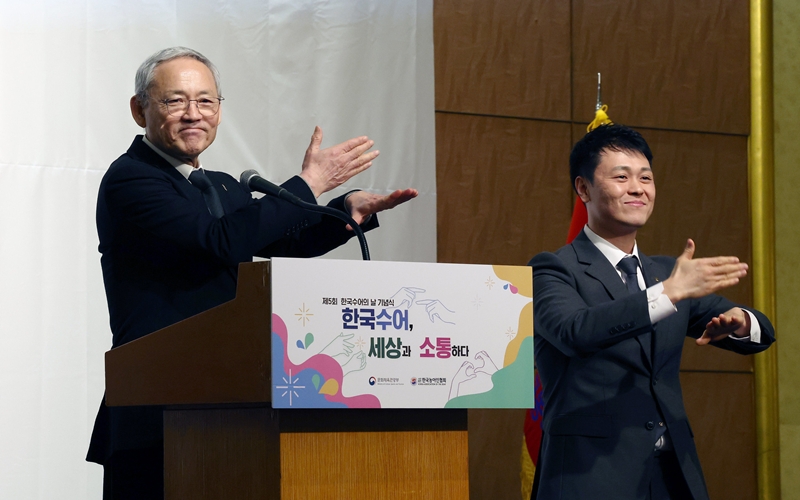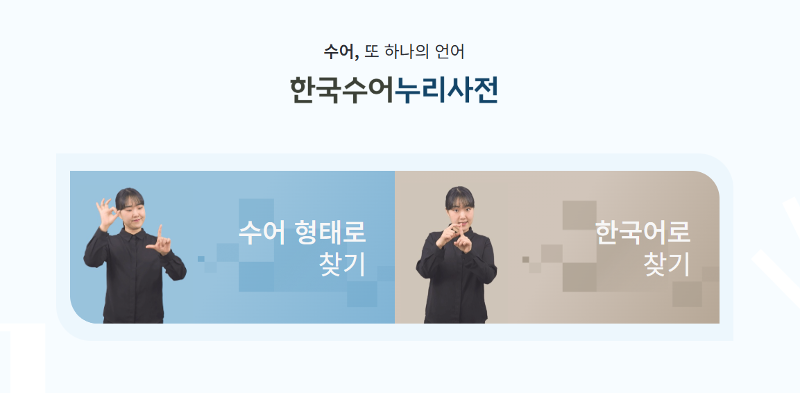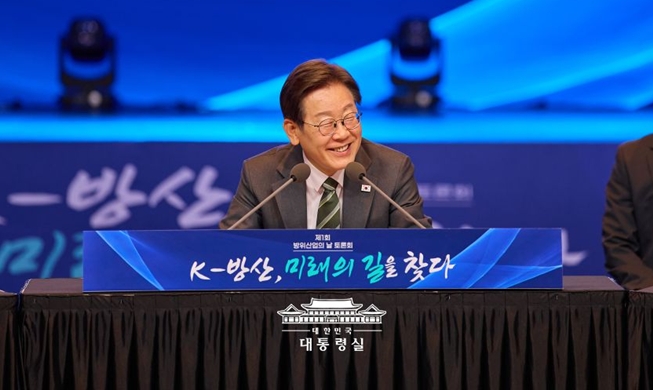
Minister of Culture, Sports and Tourism Yu In Chon (left) on Feb. 3 in a ceremony celebrates the fifth Korean Sign Language Day at Swiss Grand Hotel in Seoul's Seodaemun-gu District. The occasion marks the enactment of the Korean Sign Language Act. (Korea.net DB)
By Margareth Theresia
Access to language is gaining attention as the core of rights for people with disabilities. With awareness of sign language as a linguistic tool rising throughout society, the spread and expansion of the language is growing as a major issue.
Enacted in 2016, the Korean Sign Language Act recognized Korean sign language as the country's official language for the deaf and institutionalized national support for its preservation and development. The law recognized sign language as one with rights and not merely as a tool of consideration for the disabled.
In line with this, the National Institute of Korean Language (NIKL) has sought to raise public understanding of sign language and raise its accessibility. A result of NIKL's efforts is an online dictionary for Korean sign language released in February to help everyone learn and use the language more easily.
Its practicality received a boost through sign language videos, Korean words corresponding to sign language words, pictures and examples.
"This online dictionary contains around 1,000 entries," an NIKL staff member related to the dictionary said. "We'll add 3,000 entries to it and release some 4,000 by 2027."
Unlike conventional dictionaries of its kind, the digital model differs in that deaf researchers participated in the entire compilation process and the utilization of a corpus, or collection of written or spoken materials stored digitally for use in how language is used, allowed for vivid expressions both familiar and practical.
The new dictionary is expected to serve as a useful guide for those struggling to learn Korean sign language.

Users of the new digital sign language dictionary can find the desired words in both sign language and Korean forms. (Screen capture from online dictionary)
NIKL is also speeding up the creation of parallel corpus between Korean and sign language. In short, it will create video data by pairing Korean sentences with their sign language equivalents.
The parallel corpus will serve as core data for developing artificial intelligence-based interpretation and translation models for sign language.
"When making sign language videos, we also try to show not only hand movements but also effectively express non-manual information like facial expressions, gazes and mouth shapes," a NIKL staff member in charge of creating the parallel corpus said. "Sign language models and editors are working together to raise data quality."
Available on the website of ModuCorpus (kli.korean.go.kr), the parallel corpus is expected to be used in diverse fields like automatic kiosks for the deaf at the offices of public organizations and public information in sign language.
margareth@korea.kr
Most popular
- Grammy-winning producer calls Suga of BTS 'amazing artist'
- Animated 'KPop Demon Hunters' tops Netflix charts in 41 markets
- Reunited BLACKPINK releases video preview of world tour
- 'Universal love, family' themes fuel success of 'King of Kings': director
- New York Times picks 'Parasite' as top movie of 21st century
